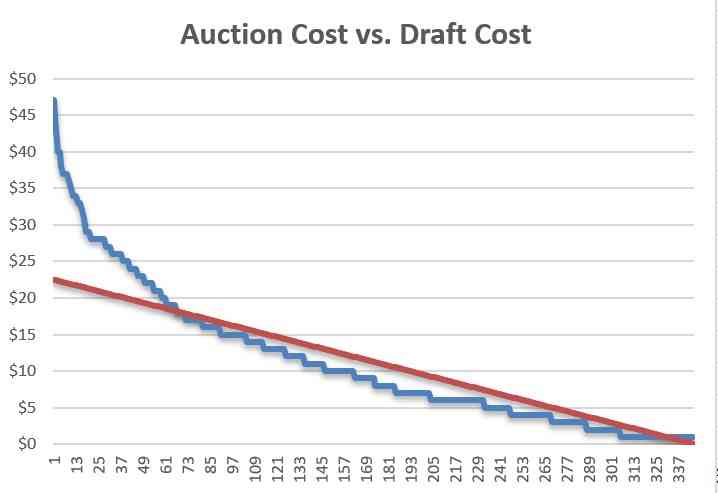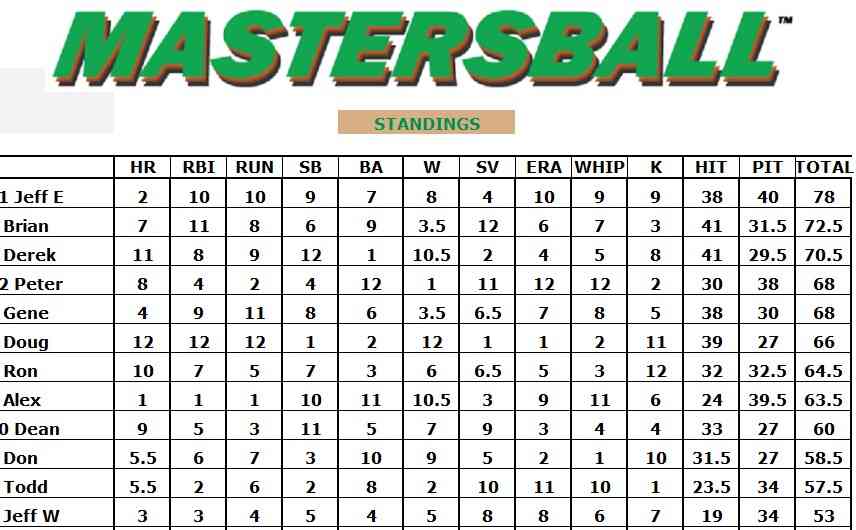For 17 years I’ve played with a bunch of friends in a quirky keeper 5×5 (OBP) fantasy league called the XFL. We hold a $260 auction in the fall at First Pitch Arizona, keeping up to 15 players off the previous year’s rosters with a $5 increase (+$3 for players picked up before they had ML playing time). Then, in March, usually, we have a 17-round supplemental draft to round out our 40-man rosters.
Only this year, you know, we didn’t have that supplemental. We first put it off until April 20, and then as that date approached we collectively realized that it made no sense to spend time on something when conditions in the majors this year may be totally different, or that there may not even be a this year, so we postponed.
Which led to the idea of doing something. Anything. What that turned out to be, under the direction of Ron Shandler, was a draft of the major league players from 1982. I’m not sure why Ron chose ’82. I pushed for 1980, since that was the first year of our game and Dan Okrent’s piece about the Rotisserie League the following winter in Inside Sports magazine was called “The Year George Foster Wasn’t Worth $36.” But 1982 was fine, it was the first year I played the game, joining the Stardust League that Matthew Berry wrote about recently, in its second year.
There are things about a retrospective draft that are different than they are in a prospective draft. Our regular drafts and auctions before the season is played are shaped by our expectations–our projections–of what players may do, what chances there are that they will do more, or less, and how we put a price on that range of outcomes.
In a retro draft you know what a player has actually done, and you know the context in which he did it. That makes it fairly easy to come up with a value for each player and a ranking of player values. But it turns out that the math only gets you so far. Here’s why.
The Split: Many years ago, in the early ’90s, Les Leopold and I developed the idea that each player actually had two prices. One was his actual worth in the fantasy season just played (that’s his retro price), and his draft price, which was based on his projection and market expectations, what I call in The Guide The Big Price. We theorized that in a retrospective auction you would allocate 50 percent of your budget to pitching and 50 percent to hitting. This was something I tried to test for a long time, but there wasn’t much interest until everyone had to stay at home for months on end.
But alas, in preparing for this retro draft, it quickly became clear to me that allocating 50 percent to pitching didn’t solve all the problems. The one problem it did solve is that of pitcher injuries and unreliability, which are one and the same for the most part. Pitchers who stay healthy are reliable, but pitchers get hurt a lot. So while we discount pitching in our draft price, splitting our budgets about 65/35, spending half on pitching for half the points seemed like a good strategy.
But if you do that, I soon realized, you’re going to have to compete in all five pitching categories, and if you do that you’re going to bump into the fact that in a draft you can’t really load up your staff with aces. If you have the first pick and take Steve Carlton by the time you pick again all the other high strikeout, high wins starters will be gone. Drafts, obviously, are different than auctions, so once again we’re not testing the split.
Dumping: A draft is a linear playing field. The difference between the price of each successive pick is the same. But the value of the player pool is not the same. So, when you graph, say, the auction prices in a mixed league and compare it to the line of selections in a similarly configured mixed draft, you’ll see that the value of the first 50 or so picks is higher than the line, while after the third round most picks are under the line.

I prepared by running the available players through my pricing spreadsheet, adjusting for a 12 team mixed league. Absolute prices weren’t important for this exercise, it was a draft, but I tried to jigger the balance between the categories so that I didn’t overvalue low-ERA low-production pitchers. The danger of doing that is because you’re (I) using computed prices for the player’s season. When we’re ranking players prospectively, we don’t price their optimal performance but rather one that’s in the middle of the range of possibilities. Drafting retroactively, you know what Joe Niekro’s optimal performance was worth, but if the value of his ERA and Ratio outstrip Steve Carlton’s monster strikeouts and wins in your formula, are you putting together a roster that can win?
Maybe.
As it turns out, Brian Feldman (fantasybaseballauctioneer.com) led off with Carlton as the first pick. I had the wheel and took Andre Dawson with the 12th pick and Joaquin “Donde Esta Mi Cabeza” Andujar for some reason. Niekro was still there, higher on my sheet, but at that point my sheet was too big, too many columns, and I misread hits allowed for strikeouts in Andujar’s case and typed his name into the sheet. It was fine, they were close enough, but I had already deviated from my pricing.
At the next turn I took Dave Winfield and Goose Gossage, creating my own mini Yankees run which also set off a closer run. But I didn’t really mean to turn this into a play by play. There are a few other points about this exercise.
If you love baseball and play fantasy baseball this is potentially a great way to get together virtually with friends and spend some hours with a new way to play and talk about baseball. Some of us played fantasy baseball in 1982, some of us weren’t even born in 1982, but we all knew how great Robin Yount’s season was, how bad George Foster’s was. There was lots to talk about while selecting teams.
Zoom allowed us to see the excellent drafting spreadsheet that is part of the Mastersball.com package. A handful of us were also on camera, though the demands of keeping up with our lists meant we weren’t watching each other. The rest were on audio feeds, which was filled with banter and reminiscing.
The spreadsheet updated after each pick with revised standings, but we didn’t start checking that (Todd Zola was updating the sheet and he’d have to be asked to show that page) until more than halfway through. If I’d been paying attention to it earlier I would have seen that by not taking Ricky or Timmy or Willie my pursuit of steals was doomed, which would have changed some of my later picks as I vainly pursued the bottom of the steals pack and failed. This came to a head fairly deep in the draft when I selected Dickie Thon’s 37 saves and didn’t make a dent.
Position scarcity is something I didn’t think about in advance and though I was in the lead for a number of the first 20 rounds my team faded at the end. I don’t think that was caused by scarcity because when you know everyone’s value the math tells you the tradeoffs. If you take Gary Carter in the third you’re getting fewer stats than if you take Gary Ward, do you get that back later? You might, but that’s not a sure thing. A properly formed price list would have the exact 168 hitters with the positions necessary to fill 12 team rosters and prices rejiggered to reflect the fact that some of those catchers are of negative value when you price all players. They’re not negative valued when you have to pay for them, the prices have to change.
In the end, Jeff Erickson pulled out to a good lead in the last round, optimizing his categories. I failed at optimizing, wasting value by buying too much average, wasting money on steals, and having too low an ERA and WHIP. We’ll be playing again in a couple of weeks, Jeff picked the 1990 season, and you can be sure we’ll all be paying more attention, not necessarily balancing the categories, but more effectively managing the categories we dump. Or not.
Click here for the draft results.



When you realized you were looking at the wrong K column for Andujar, did you decide to dump wins and Ks?
Drafting from the 12th position I figured I couldn’t really compete in Ks and Ws. After the big three K guys, all the rest had bad qualitatives to go with their strikeouts and I had to stay away from those. I mean, I should have taken and would have taken Niekro with that pick if I didn’t take Andujar, so I wasn’t really competing in K and Wins from the start. But I was thinking I might get some points in those categories, though after a handful of rounds I realized that wasn’t going to happen.